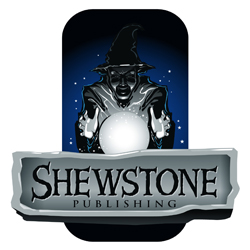by John Tibbetts and Mark Lawford
Summary: Find out why ghosts are congregating at the town of Gullimore
Content Warnings: Death, desecration of graves
Genre: Mystery
Place: A small town
Time: Any era
Length: Medium (2-4 hours)
Hook
The (fictional) market town of Gullimore has a ghost problem. Ghosts arise every night, screaming and pleading for peace. It started six months ago with a single ghost, but now there are at least a dozen. No one has been harmed, but the villagers cannot get any sleep. Gullimore is at a crossroads that many merchants travel, and the disruption to trade has become so severe the sheriff (a high official responsible for public safety) has offered a reward to anyone who can put the ghosts to rest.
Line
Arriving in Gullimore to investigate, the PCs find that they aren’t alone. Others have heard of the problem—and the potential reward—and have decided they will solve the problem.
If the PCs have any particular rivals, they may be present and ready to make trouble. Other, less experienced investigators try to tail the PCs to learn what they know and to try to get the jump on them. Others still are there to sell charms to the townsfolk to ward off ghosts and to ensure a quiet night’s sleep. It’s as though the investigators are as much a problem as the ghosts themselves.
As for those ghosts, they appear to be recently dead—within the last six months or so, which aligns to the length of time the problem has been ongoing. There is no shortage of witnesses, and the fear and dread has turned to annoyance. At night, during the witching hour (between 3 and 4 o’clock), the investigators flock to the streets to try to commune with the ghosts, to catalogue them, and to ward against them. All the while, the ghosts wail and complain at their disturbed rest.
Speaking to the ghosts is not very informative. They know their names and something of their former lives, but they’re obsessed with being unable to rest and are fruitlessly searching the for what disturbed them.
If the PCs ask the townfolk who the ghosts are, they find the spirits are not local, but there are witnesses who recognize them. One identifies old Rob, a stonemason from yonder town. Another identifies Meg, a farmer’s wife from the other end of the county.
Following the trail to those locations, the PCs can find the ghosts’ graves and can determine via magic or physical inspection that those final resting places have been robbed and the bodies removed.
Sinker
The ghosts are rising because body snatchers have been digging up graveyards throughout the area and stealing the corpses to sell to physicians in the nearest city (likely Cambridge or Oxford or somewhere with a university or medical school). The hauntings are directed toward the body snatchers, who must be caught and the bodies returned to their graves to end the nuisance.
The body snatchers are Bill Tanner and his son John, and they have some limited magical power bought from a theurgist, specifically a kind of ward that hides them from ghostly attention (see the attached spell description). The Tanners live in a quarter of the town that the ghosts mysteriously avoid, and their tanning business takes them across the county collecting animal hides and bringing them back to Gullimore for treatment—a perfect cover.
The bodies have been sold to the medical school, studied, and then buried in unmarked pauper’s graves in the nearest large cemetery.
Preparation Notes
You may need a few fellow investigators, each with their own motives and methods, some of whom are schooled in the magical sciences. You’ll also need to note that there is a small district of the town that has remained free from the ghostly invasion. When asking questions in that area, the PCs will learn that the neighborhood is actually where the haunting started, which suggests someone has done something to change things there.
Keywords: Ghosts, body snatchers
101 Adventure Frames in Enchanted England is coming to Kickstarter! Follow now to support a strong launch.


